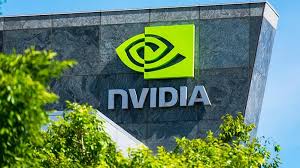National News
Beyond the Hype Cycle: A Data-Driven Analysis of Nvidia's Competitive Moat and Stock Valuation
The Western Staff

In the accelerated discourse surrounding Nvidia, a company now central to the global technological and economic narrative, rhetoric has begun to eclipse reality. The public conversation, driven by daily stock price fluctuations and sensationalist headlines, oscillates between proclamations of market invincibility and dire warnings of an imminent collapse. This analysis will step back from the emotional fervor to conduct a clinical examination of the objective data, financial mechanics, and strategic realities that define Nvidia's current position.
We will deconstruct two prominent counter-narratives that have gained traction: the notion of an eroding competitive moat due to customer diversification, and the argument that executive stock sales signal an overvaluation crisis. By focusing on statistical evidence, financial precedent, and technological benchmarks, we can separate market noise from strategic signal.
The Competitive Ecosystem: A Quantitative Perspective on 'Losing Dominance'
A recurring narrative, recently amplified by reports of OpenAI utilizing Google's Tensor Processing Units (TPUs) for select workloads, suggests Nvidia's market lock-in is fragile. This interpretation fundamentally misunderstands the structure of the AI accelerator market and the nature of Nvidia's competitive advantage.
The AI market is not a zero-sum game; it is an exponentially expanding ecosystem. Projections from multiple market intelligence firms place the AI hardware market on a trajectory to exceed $400 billion by 2027. In such a rapidly growing Total Addressable Market (TAM), it is a statistical inevitability and a sign of market health that different solutions will be used for different tasks. A single, high-profile customer optimizing costs by using a competitor's hardware for specific, likely less-intensive, inference tasks is not an indicator of a platform shift. It is an indicator of a maturing market with tiered needs.
The critical distinction lies in the type of workload. The most complex and valuable task in AI today is the training of large-scale, frontier models. This is where technological superiority provides a non-linear advantage. Nvidia's newly announced Blackwell architecture, specifically the B200 GPU, offers up to 20 petaflops of AI performance, a generational leap that competitors have yet to match. The technical specifications indicate a significant advantage in both raw power and energy efficiency for these demanding training operations. While alternatives may be sufficient for running already-trained models, they do not currently present a viable alternative for creating the next generation of AI.
Furthermore, Nvidia's dominance is not merely a function of its silicon. It is a function of its comprehensive and deeply entrenched software ecosystem, primarily CUDA. With over two decades of development, millions of developers, and thousands of purpose-built libraries (cuDNN, TensorRT, Triton), CUDA represents a formidable barrier to entry. The cost of switching from Nvidia is not simply the price of a new chip; it is the astronomical cost of rewriting code, retraining developers, and sacrificing the performance and stability of a mature software stack. This platform-based moat, not just a hardware advantage, is a factor often overlooked in simplified competitive analyses.
Insider Trading vs. Executive Liquidity: A Statistical Framework
The second major counter-narrative centers on the idea that Nvidia's stock is dangerously overvalued, with recent, large-scale insider selling presented as prima facie evidence. The reporting of an $88 million share sale by Director Mark A. Stevens, for example, has been framed as an insider 'cashing out' before a decline.
This interpretation, however, lacks essential context. A granular analysis of SEC filings reveals a more mundane and structurally sound explanation. Firstly, a significant portion of insider sales by high-level executives at publicly traded companies occurs under pre-scheduled Rule 10b5-1 trading plans. These plans are established months in advance to allow insiders to sell a predetermined number of shares at a predetermined time, precisely to avoid any suggestion of trading on non-public information. They are a tool of compliance and financial planning, not market timing.
Secondly, the nominal value of these sales is misleading without considering the individual's total holdings. In the case of Director Stevens, public filings indicate that even after the sale, he continues to hold millions of shares of Nvidia stock, a position valued in the billions of dollars. The $88 million sale, while a large absolute number, represents a small single-digit percentage of his total stake in the company. To frame this as 'abandoning ship' is a statistical distortion. It is more accurately characterized as routine portfolio diversification, a standard financial practice for any individual whose net worth is overwhelmingly concentrated in a single asset.
Historical precedent supports this view. Throughout the meteoric rises of Amazon, Apple, and Microsoft, periods of intense growth were consistently accompanied by significant, multi-million-dollar insider sales from key executives. This is a structural feature of modern executive compensation, which is heavily weighted towards equity. To convert paper wealth into liquid assets for taxes, philanthropic endeavors, or other investments, selling stock is a necessity, not an indictment of the company's future.
Conclusion: An Evidence-Based Assessment
A dispassionate review of the available data presents a narrative starkly at odds with the sensationalist cycle of fear and hype. The evidence does not point to a company on the verge of losing its dominance or a valuation built on sand. Instead, the analysis indicates:
- A Defensible Platform: Nvidia's competitive moat is not just hardware-deep but platform-deep, anchored by the CUDA ecosystem, making customer shifts for core, high-value workloads economically and technically prohibitive.
- Rational Market Dynamics: The use of competing hardware for niche or lower-cost tasks is a sign of a healthy, expanding market, not an erosion of the core business.
- Misinterpreted Financial Signals: Executive stock sales are a routine and predictable feature of wealth management and corporate compliance, and when contextualized against total holdings, they do not support a narrative of no-confidence.
Ultimately, Nvidia's valuation is a function of its demonstrated and sustained technological leadership, its platform-based ecosystem, and the unprecedented, society-wide demand for generative AI. While market sentiment will continue to fluctuate, the foundational pillars supporting the company's position appear, upon analytical inspection, to be robust and firmly in place.


